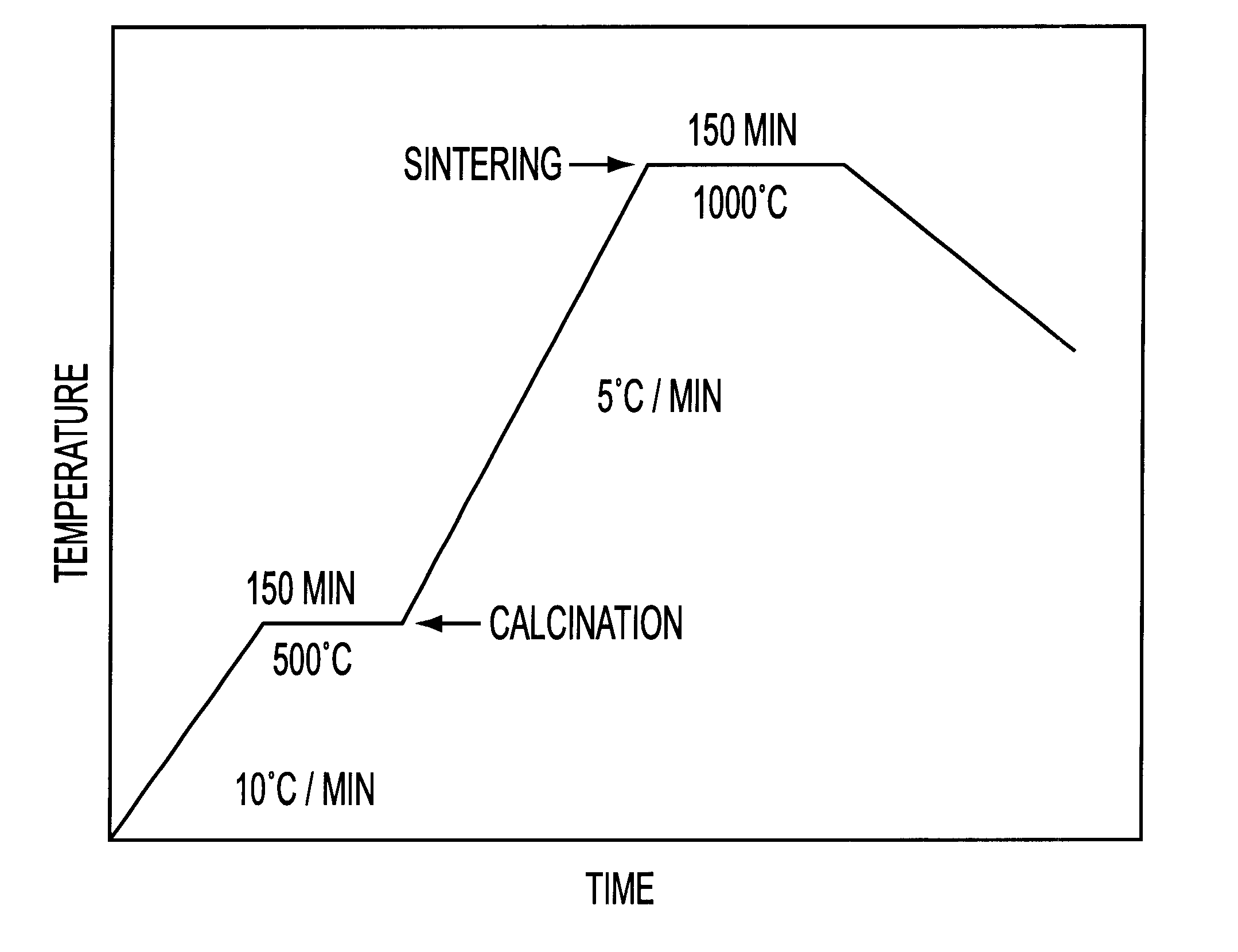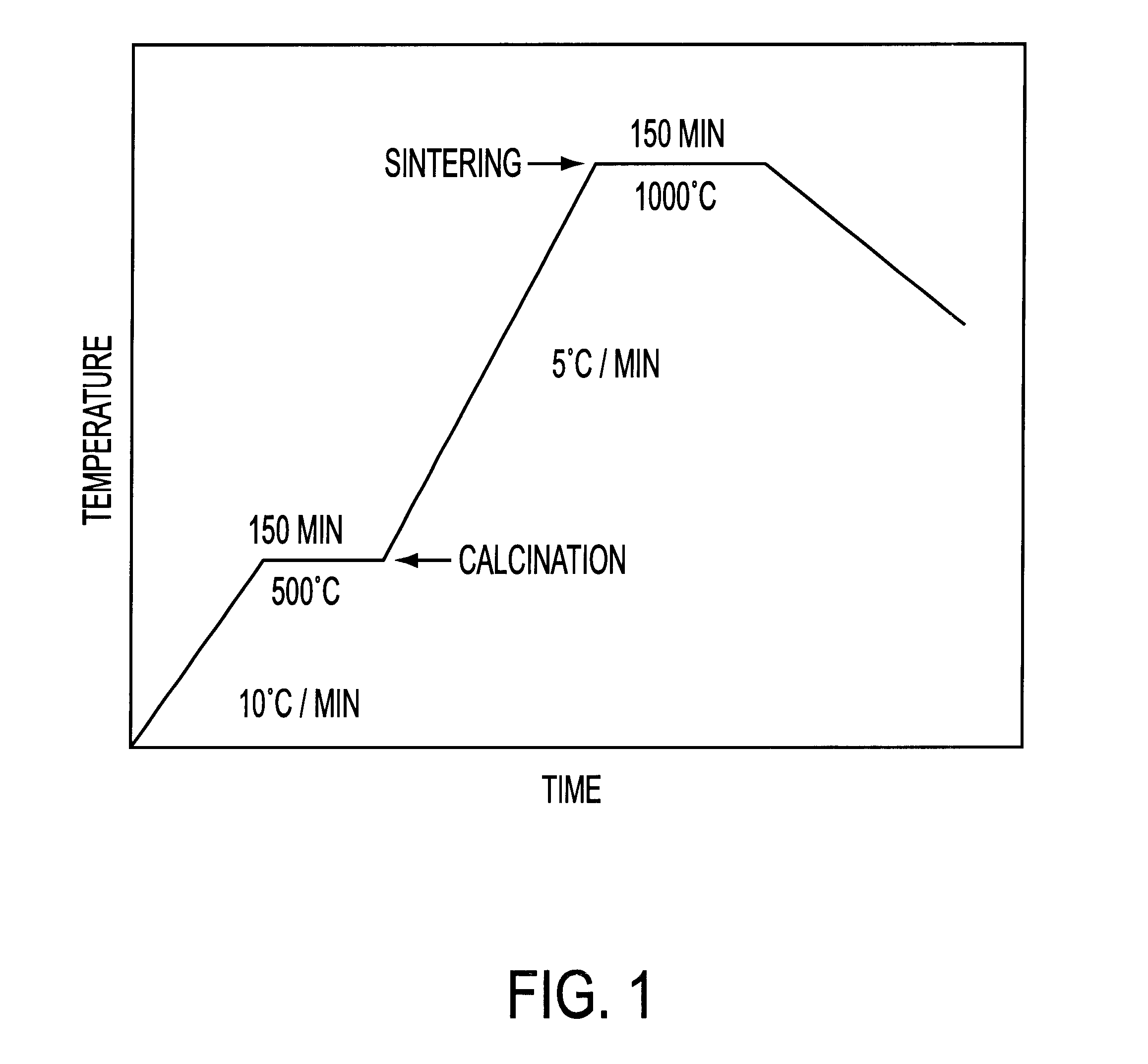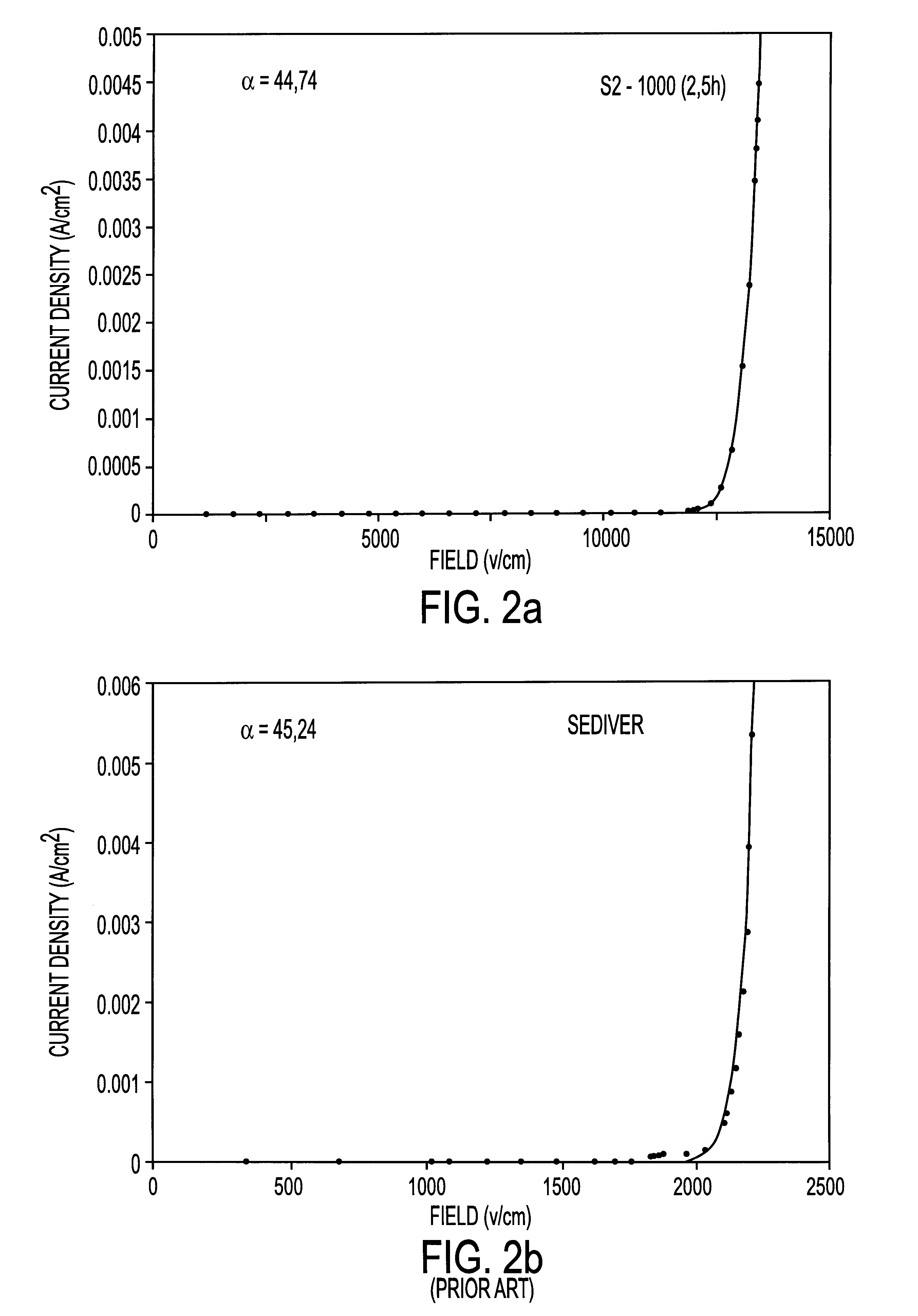Varistors based on nanocrystalline powders produced by mechanical grinding
a technology of nanocrystalline powder and varistors, which is applied in the direction of resistive material coating, non-metal conductors, applications, etc., can solve the problems of increasing the size of grains and/or evaporating some additives
- Summary
- Abstract
- Description
- Claims
- Application Information
AI Technical Summary
Benefits of technology
Problems solved by technology
Method used
Image
Examples
example 2
Preparation of a S2-1,000 (1h) Varistors
By using the same starting products and the same molar percentages as in example 1, a first mixture of Bi.sub.2 O.sub.3 and Al.sub.2 O.sub.3 was made. This first mixture was subjected to high energy milling for 10 h in an apparatus of trademark SPEX. Then, the first mixture was subjected to a pressing under a pressure of 160 MPa in order to obtain a first pellet. This first pellet was then sintered at 1,100.degree. C. for 1 hour, and subsequently broken into chunks.
The chunks of the first pellet was then mixed with a 99.99% pure powder of ZnO. The second mixture that was so obtained was subjected to high energy milling for 10 h in the same SPEX apparatus. The second mixture obtained after milling was then calcinated at 550.degree. C. for 2.5 h and mixed with 2% by weight of PVA used as a binder. The obtained mixture of powder and PVA was then pressed in the form of a second pellet under a pressure of 630 MPa. This second pellet was subjected t...
example 3
Preparation of S2-1,000 (1 h) Varistors
By using the same starting materials and the same molar percentages as in example 1, one proceeded substantially in the same manner as in example 2, except that, in the first prepared mixture, ZnO- doping agents such as Al.sub.2 O.sub.3 were excluded to limit the mixture exclusively to the materials called "of grain boundaries", that is Bi.sub.2 O.sub.3, Sb.sub.2 O.sub.3, MnO.sub.2 and SiO.sub.2. This first mixture was subjected to the same first milling, pressing and sintering as in example 2, under the same conditions.
In parallel to this treatment, the pure powder of ZnO was milled with its doping agent Al.sub.2 O.sub.3 for 1 h in a SPEX apparatus, and the so-obtained, milled powder was mixed with chunks of the first sintered pellet that was obtained. This new mixture was then subjected to the same second milling, calcination, addition of PVA, pressing and sintering as in example 2.
The sintered second pellet obtained as a final product has pr...
example 4
Evaluation of the I-V Characteristics of S2-1,000 (2.5 h) varistors
The current-voltage (I-V) characteristics of S2-1,000 (2.5 h) varistors were measured by using a resistometer Hewlett-Packard HP-4339A, following the conventional 4 points method. The applied voltage was ranging from 0.1 to 1,000 V. The current was measured over a range of 10.sup.-8 to 10.sup.-1 mA.
FIG. 2a is a curve giving the value of the current density as a function of the voltage field (V / cm) in the case of a S2-1,000 (2.5 h) varistor. FIG. 2b is a curve similar to the one of FIG. 2a, giving the value of the current density as a function of the voltage field in the case of a varistor of trademark SEDIVER.
As can be noticed, the break-down voltage of the S2-1,000 (2.5 h) varistor according to the invention is close to 12.5 kV / cm and its coefficient of non-linearity .alpha. is equal to 44.7. The leakage current below the break-down voltage ranges from 1.times.10.sup.-7 to 2.times.10.sup.-6 A / cm.sup.2. The leakage c...
PUM
| Property | Measurement | Unit |
|---|---|---|
| Grain size | aaaaa | aaaaa |
| Time | aaaaa | aaaaa |
| Time | aaaaa | aaaaa |
Abstract
Description
Claims
Application Information
 Login to View More
Login to View More - R&D
- Intellectual Property
- Life Sciences
- Materials
- Tech Scout
- Unparalleled Data Quality
- Higher Quality Content
- 60% Fewer Hallucinations
Browse by: Latest US Patents, China's latest patents, Technical Efficacy Thesaurus, Application Domain, Technology Topic, Popular Technical Reports.
© 2025 PatSnap. All rights reserved.Legal|Privacy policy|Modern Slavery Act Transparency Statement|Sitemap|About US| Contact US: help@patsnap.com



